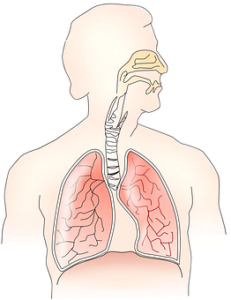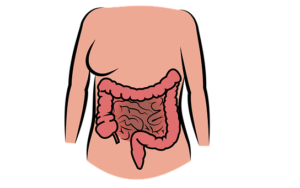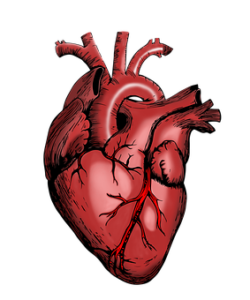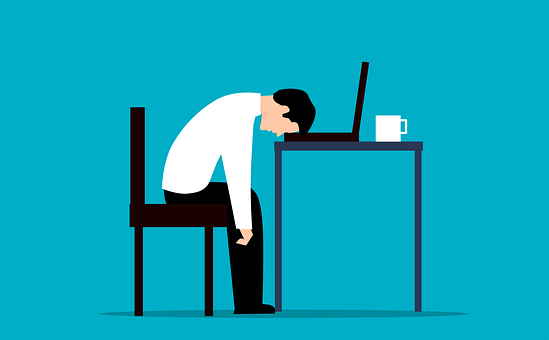Silenttest.com may earn a commission when you purchase products from companies we are affiliated with through promoting their products, at no extra cost to you. Prices are the same when buying products through an affiliate or non-affiliate link. Full Disclosure
Quitting smoking can be a difficult journey, but it is one of the best decisions you can make for your health. However, many people are often reluctant to quit smoking for the potential side effects that can occur.
Nicotine addiction is powerful, and when you stop smoking, the body goes through an adjustment period that can lead to a variety of emotional, physical and psychological effects..
Common side effects of quitting smoking are nicotine withdrawal symptoms such as nicotine cravings, irritability, restlessness, anxiety and others outlined here .
Worry not, you can achieve your goal of quitting smoking by using gums, patches or the Quit Smoking Aromatherapy Inhaler.
Read on and learn the possibilities of beating all the odds!
side effects of quitting smoking
There are common withdrawal symptoms including:
- Physical side effects
- Psychological side effects
1.Physical side effects


When one stops smoking, the body experiences a number of positive and negative physical changes. Physical effects of withdrawal can vary from one person to another depending on various factors like the length of the smoking period.
Although these physical side effects of withdrawal can be difficult, it is important to note that these effects are just temporary and will ease up over time.
You can opt to have a program that you can listen to audios and scripts directly to your phone to help you cope with withdrawal symptoms faster.
In addition, the long-term health benefits of smoking cessation, such as reduced risk of heart disease, cancer and other critical diseases, make this temporary discomfort worth it.
Physical side effects includes:
(a)Nicotine withdrawal symptoms
Intensity and duration may vary depending on individual nicotine addiction and duration of smoking. Some typical symptoms of nicotine withdrawal comprises of:


1.Craving for cigarettes
2. Irritability or restlessness
3. Nervousness or anxiety
4. Difficult in concentrating
5. Trouble sleeping
6. Headache
7. Weight gain (accompanied by increased appetite)
8. Fatigue
9.Depression
These withdrawal symptoms can occur within hours of stopping smoking and usually peak within the first few days and can last up to several weeks or more but usually go away within a few weeks.
It’s important to remember that while nicotine withdrawal symptoms can be uncomfortable and intolerable, they are temporal effects and can be coped with a variety of strategies, such as: Nicotine replacement therapy, behavioral therapy and counseling, family and friends.
(b)Respiratory symptoms


People who quit smoking often suffer from breathing problems, especially in the first few weeks after quitting smoking. These symptoms can include:
- coughing
- wheezing
- shortness of breath
- chest tightness, and excess mucus production.
They occur as a result of the damages that could have been made on the lungs and airways. Quitting smoking allows the body to start repairing that damage.
As the body begins to heal, it can produce more mucus than usual to clear the lungs of toxic substances inhaled from smoking.
With this, coughing and wheezing can also occur when the lungs begin to remove excess mucus and debris.
The discomfort that comes with this process is usually a sign that the body is healing and recovering from the damages caused by smoking, so be patient with everything.
As the body continues to recover, the symptoms should improve and become less unbearable. However, if symptoms persist, it’s important to see a doctor as it could be a sign of a more critical respiratory problem.
(c)Digestive symptoms


Quitting smoking may cause a variety of physical symptoms as the body adjusts to the lack of nicotine such as gastrointestinal symptoms.
These gastrointestinal symptoms include:
Constipation: Nicotine is popularly known for causing a laxative effect and that’s how you experience constipation upon quitting smoking.
Diarrhea: some people may develop diarrhea after quitting smoking. This is because nicotine is said to stimulate the digestive system, and without nicotine, the digestive system can slow down, leading to diarrhea.
Indigestion: Smoking can cause heartburn and acid reflux, and quitting smoking can make these symptoms worse. The reason behind this is that smoking weakens the lower esophageal sphincter muscle, which prevents the stomach acid from flowing back up into the esophagus.
Nausea: nausea is a common withdrawal symptom that is accompanied by quitting smoking. This may occur due to the body’s response to a lack of nicotine, or it may be a side effect of anxiety that can accompany smoking cessation.
Stomach Pain: Stopping smoking can cause a stomach ache in some people. This can be because the digestive system is adjusting, or it can be a side effect of stress and anxiety.
(c)Cardiovascular symptoms


When quitting smoking, the body goes through several changes and you may experience a variety of cardiovascular symptoms. Quitting smoking can have positive or negative impacts on your heart and blood vessels in a number of ways.
You may initially notice an increased blood pressure and heart rate after quitting smoking. In fact, nicotine is said to be a stimulant that increases the heart rate and constricts blood vessels.
When you quit smoking, your body definitely needs time to come to terms for lack of nicotine, and this adjustment time can lead to temporary cardiovascular symptoms.
Some typical cardiovascular symptoms that may occur when you quit smoking are:
- Increase of heart rate
- Increase of blood pressure
- Chest tightness or pain
- irregular heartbeat
- Shortness of breath
- Dizziness
Keep in mind that cardiovascular symptoms are just temporary and should go away within weeks or months.
On the other hand, not smoking can significantly improve long-term cardiovascular health. A few weeks after you quit smoking, blood pressure and heart rate should go back to normal.
Besides, the risk of heart disease and stroke will automatically decrease.
So, while you may experience some temporary cardiovascular symptoms after quitting smoking, remember that the long-term benefits are all worth it.
2.Psychological side effects of quitting smoking


Quitting smoking can produce a number of psychological side effects, such as:
Cravings: They are common psychological side effects when quitting smoking. Cravings can be intense and sometimes difficult to resist, especially in the first days of quitting smoking.
Mood Swings: Many people experience mood swings after quitting smoking. These can include irritability, restlessness, anxiety and depression.
Insomnia: Nicotine withdrawal can disrupt sleep patterns and cause insomnia or difficulty in falling asleep.
Difficulty Concentrating: Quitting smoking can also make it more difficult to concentrate, which can affect your daily activities.
Increased appetite: Nicotine is known to suppress the appetite, so not smoking can lead to increased appetite which then results in weight gain.
Fatigue: It is another withdrawal effect and you may find yourself having trouble concentrating and staying alert.
Grumpy: After quitting smoking, one may become irritable especially in the first few days or weeks after quitting.
Remember that these side effects are only temporary and will go away as the body adjusts to not using nicotine.
If you are experiencing severe mental health side effects, or have a history of mental health problems, it is important that you speak to your doctor or psychologist for support and advice.
how to control the side effects of quitting smoking


Doing away with smoking can be a tough process and side effects are common as the body tries to revamp. Here are tips and tricks to help you deal with withdrawal symptoms.
- Use Nicotine Replacement Therapy
Nicotine replacement therapy (NRT) can help in reducing withdrawal effects and help you stop smoking within the shortest time possible. NRT products such as inhalers, patches, nicotine gum, or lozenges, can also help relieve the nicotine cravings.
- Drink Plenty of Water
Drinking generous amounts of water can help in flushing out the toxins from your body and thereby reducing some physical side effects of withdrawal such as nausea and headaches.
- Regular Exercise
Exercising can chip in and make you feel better by releasing endorphins, the body’s natural feel-good chemicals. It can also help control cravings, improve your overall mood and reduce stress.
- Getting enough sleep
This is important to cope with stress and lessen the severity of withdrawal side effects.
- Healthy Diet
Eating a balanced diet helps in controlling gaining weight that often accompanies smoking cessation. Another thing, avoid sugary or high-fat foods as much as possible, as they can make withdrawal symptoms worse.
- Seek Support
It’s easier to quit smoking when you have the support of friends, family, or even healthcare providers. Consider joining withdrawal symptoms support groups or seek the help of a therapist or a counselor to help you deal with the physical, psychological and emotional side effects.
Some of these support programs are available online like the hypnosis program, you can listen to audios from the comfort of your home and get help without having to travel.
Bear in mind that smoking is a journey and sometimes, it may take several attempts before winning.
Be patient with yourself, the process and celebrate the small wins along the way.
Nicotine Replacement therapy (stop smoking naturally & fast)
There are several nicotine replacements therapies you can use to help you curb the smoking craving such as gums and inhalers just to mention a few.
Common popular inhaler is the FUM essential oils inhaler.


Fum essential oils inhaler is nicotine replacement therapy that uses essential oils to provide therapeutic benefits.
Essential Oils are a blend of organic extracts from plants that support respiratory health, general wellness and for this case help you stop smoking in a natural way.
To use the Fum inhaler, you usually breathe in through the mouth and breath out through the nose.
The benefits of using fum are all you need when on smoking cessation. They help curbing the smoking craving, which is the elephant thing in trying to stop smoking.
Besides, fum offers relaxation, reduces anxiety, helps in dealing with psychological problems that may come after you quit smoking. Above all, fum enables you to quit smoking as fast as it could without using it.
benefits of quitting smoking


Quitting smoking has many benefits including:
1. Improved Lung Function: Ceasing smoking can help improve lung function by making breathing easier and at the same time reducing the risks of lung cancer and other lung related diseases.
2. Reducing the risk of cancer: Smoking is an important risk factor for various types of cancer, including esophagus, lung and bladder cancer. Quitting smoking can reduce your risk of developing these type of cancers.
3.Reducing the risk of heart diseases: Smoking is a vital risk factor for existence of heart disease, and quitting smoking can remarkably decrease the risk of stroke and heart attack.
4.Improved sense of smell and taste: Smoking can weaken the sense of taste and smell, and with quitting smoking, these senses can be impacted positively.
5.Better Oral Health: gum disease, bad breath and tooth decay are mainly caused by smoking. Quitting smoking will definitely improve your breath and reduce gum and tooth decay problems.
6.Improved General Health: Quitting smoking can aid in improving general health and increasing life expectancy.
7. Reducing the Risk of Secondhand Smoke: Smoking around people can cause second hand smoke and may impact negatively on their health. Smoking cessation will reduce the risk of exposing family and friends to secondhand smoke.
8. Save Money: Smoking can be costly, and quitting smoking can save you money on cigarettes and potentially reduce health care costs associated with contracting smoking related diseases.
9. Improved appearance: Smoking can lead to skin damage and premature skin aging . Quitting smoking improves the appearance of your skin, hair and teeth.
Quitting smoking can have a tremendous impact on a person’s health, well-being and quality of life. Choose a better life instead.
Final verdict
It’s important to remember that withdrawal effects can vary for different persons, and some people may undergo more severe effects than others. However, with the appropriate resources and support , many people can manage quitting smoking and boost their well being and their overall health.
In the long run, ceasing smoking can have a myriad of benefits such as decreased risks of heart disease, stroke, lung cancer, and any other critical illnesses.
